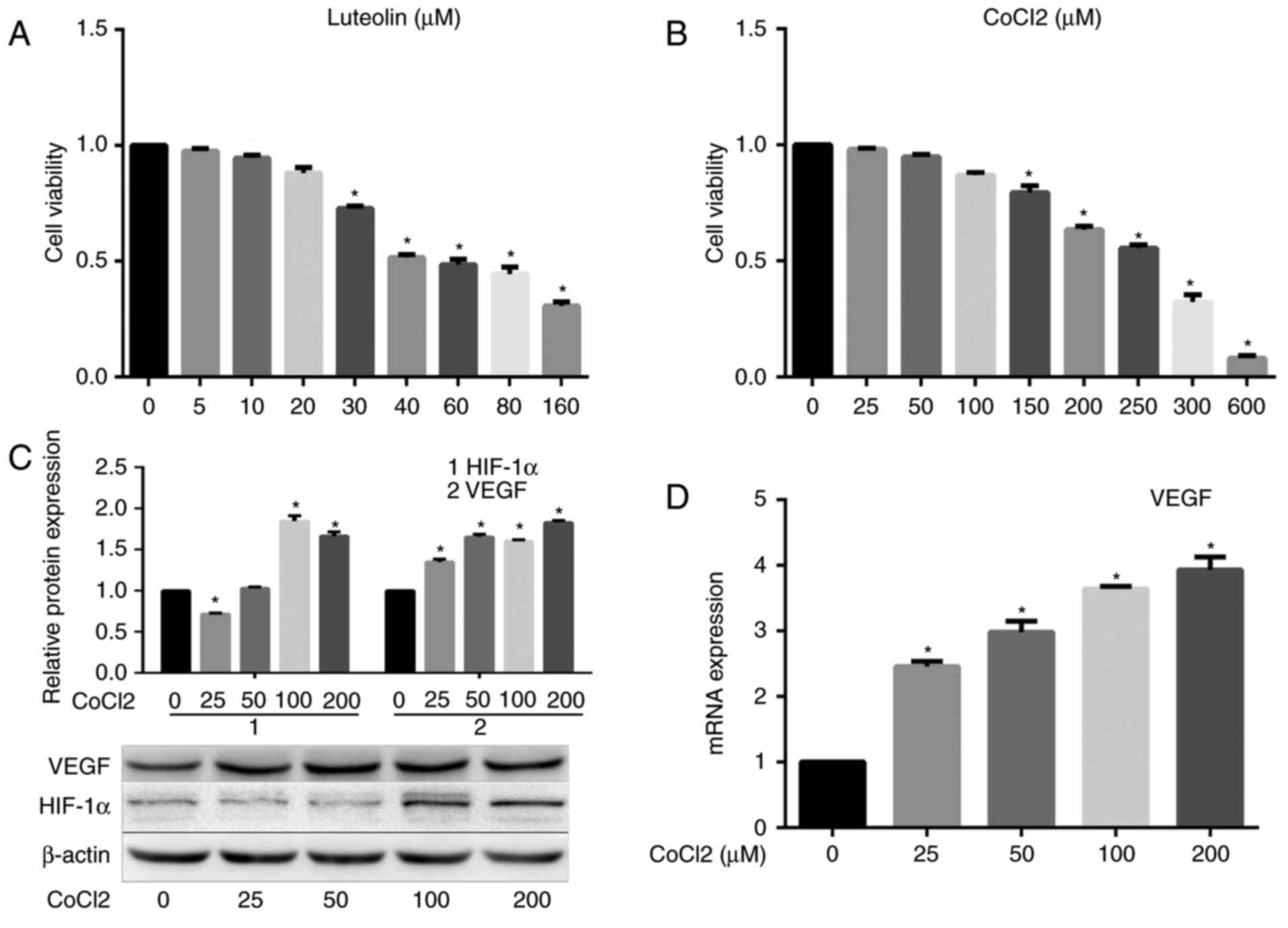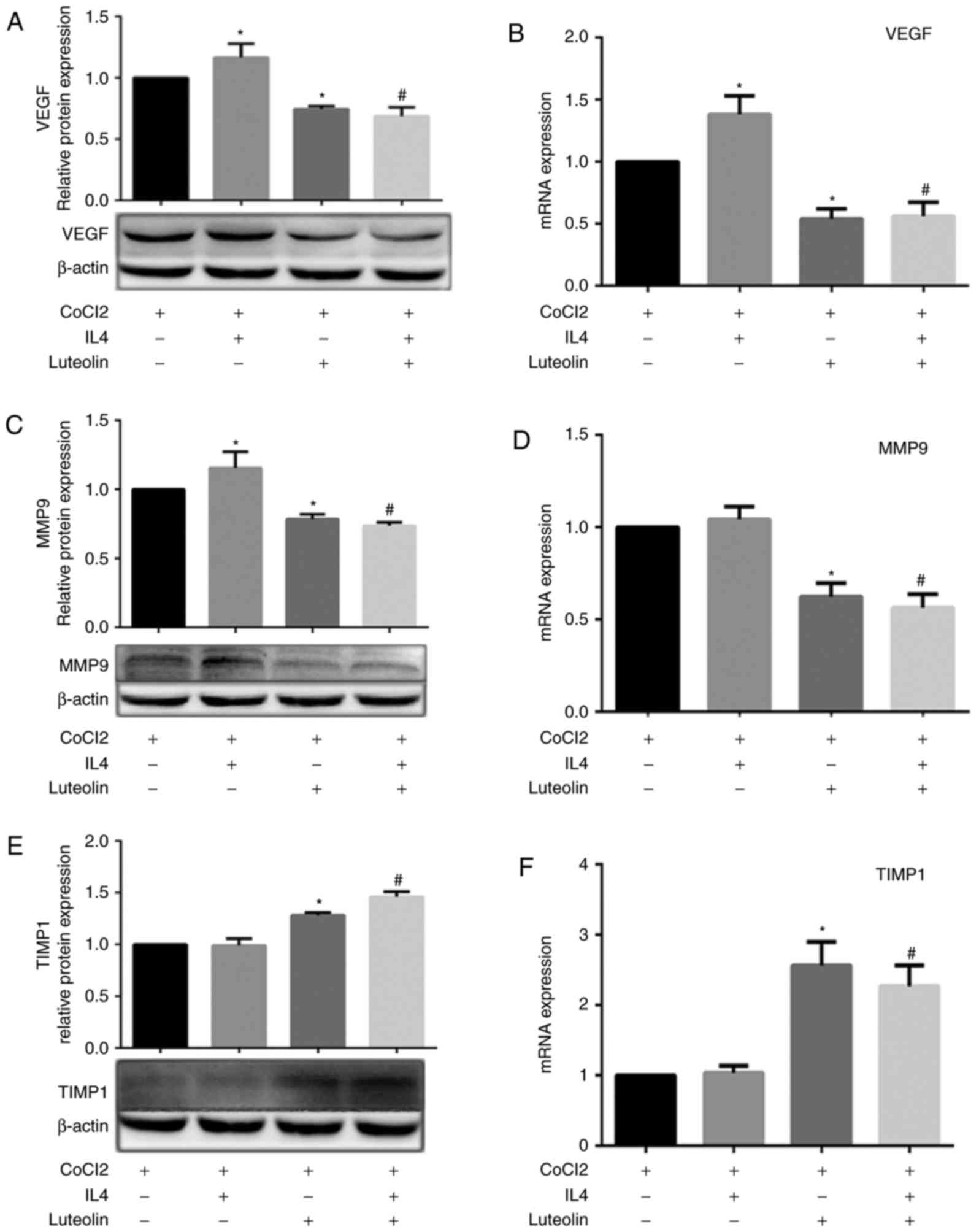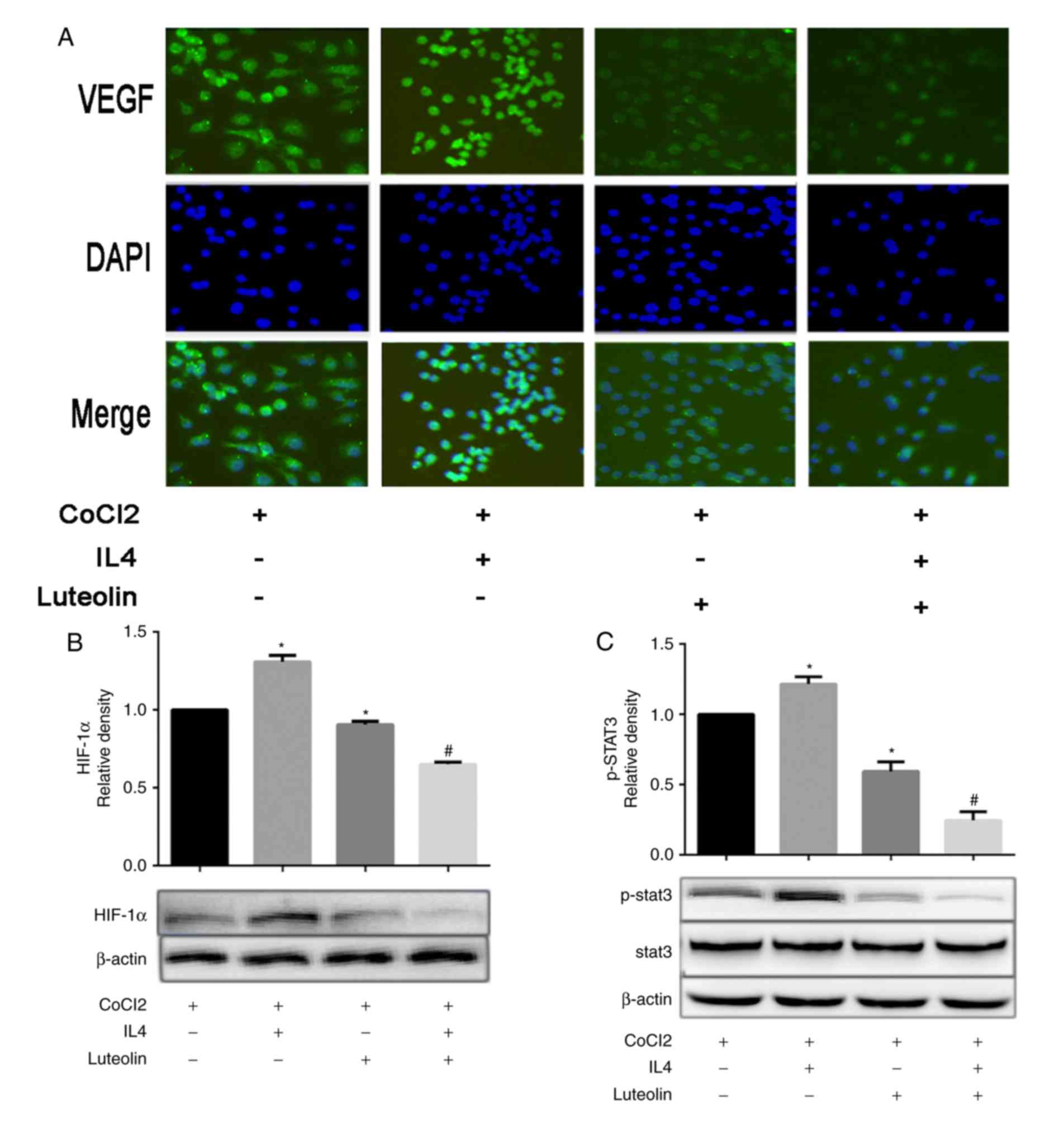|
1
|
Hanahan D and Coussens LM: Accessories to
the crime: Functions of cells recruited to the tumor
microenvironment. Cancer Cell. 21:309–322. 2012. View Article : Google Scholar : PubMed/NCBI
|
|
2
|
Dannenmann SR, Thielicke J, Stöckli M,
Matter C, von Boehmer L, Cecconi V, Hermanns T, Hefermehl L,
Schraml P, Moch H, et al: Tumor-associated macrophages subvert
T-cell function and correlate with reduced survival in clear cell
renal cell carcinoma. Oncoimmunology. 2:e235622013. View Article : Google Scholar : PubMed/NCBI
|
|
3
|
Murray PJ and Wynn TA: Obstacles and
opportunities for understanding macrophage polarization. J Leukoc
Biol. 89:557–563. 2011. View Article : Google Scholar : PubMed/NCBI
|
|
4
|
Wynn TA, Chawla A and Pollard JW:
Macrophage biology in development, homeostasis and disease. Nature.
496:445–455. 2013. View Article : Google Scholar : PubMed/NCBI
|
|
5
|
Mantovani A, Romero P, Palucka AK and
Marincola FM: Tumour immunity: Effector response to tumour and role
of the microenvironment. Lancet. 371:771–783. 2008. View Article : Google Scholar : PubMed/NCBI
|
|
6
|
Murray PJ, Llen JE, Biswas SK, Fisher EA,
Gilroy DW, Goerdt S, Gordon S, Hamilton JA, Ivashkiv LB, Lawrence
T, et al: Macrophage activation and polarization: Nomenclature and
experimental guidelines. Immunity. 41:14–20. 2014. View Article : Google Scholar : PubMed/NCBI
|
|
7
|
Pickert G, Lim HY, Weigert A, Häussler A,
Myrczek T, Waldner M, Labocha S, Ferreirós N, Geisslinger G, Lötsch
J, et al: Inhibition of GTP cyclohydrolase attenuates tumor growth
by reducing angiogenesis and M2-like polarization of tumor
associated macrophages. Int J Cancer. 132:591–604. 2013. View Article : Google Scholar : PubMed/NCBI
|
|
8
|
Cardoso AP, Pinto ML, Pinto AT, Oliveira
MI, Pinto MT, Gonçalves R, Relvas JB, Figueiredo C, Seruca R,
Mantovani A, et al: Macrophages stimulate gastric and colorectal
cancer invasion through EGFR Y(1086), c-Src, Erk1/2 and Akt
phosphorylation and smallGTPase activity. Oncogene. 33:2123–2133.
2014. View Article : Google Scholar : PubMed/NCBI
|
|
9
|
Chen W, Ma T, Shen XN, Xia XF, Xu GD, Bai
XL and Liang TB: Macrophage-induced tumor angiogenesis is regulated
by the TSC2-mTOR pathway. Cancer Res. 72:1363–1372. 2012.
View Article : Google Scholar : PubMed/NCBI
|
|
10
|
Bellon G, Martiny L and Robinet A: Matrix
metalloproteinases and matrikines in angiogenesis. Crit Rev Oncol
Hematol. 49:203–220. 2004. View Article : Google Scholar : PubMed/NCBI
|
|
11
|
Li SH, Shin DH, Chun YS, Lee MK, Kim MS
and Park JW: A novel mode of action of YC-1 in HIF inhibition:
Stimulation of FIH-dependent p300 dissociation from HIF-1{alpha}.
Mol Cancer Ther. 7:3729–3738. 2008. View Article : Google Scholar : PubMed/NCBI
|
|
12
|
Hasanain M, Bhattacharjee A, Pandey P,
Ashraf R, Singh N, Sharma S, Vishwakarma AL, Datta D, Mitra K and
Sarkar J: α-Solanine induces ROS-mediated autophagy through
activation of endoplasmic reticulum stress and inhibition of
Akt/mTOR pathway. Cell Death Dis. 6:e18602015. View Article : Google Scholar : PubMed/NCBI
|
|
13
|
Huang X, Dai S, Dai J, Xiao Y, Bai Y, Chen
B and Zhou M: Luteolin decreases invasiveness, deactivates STAT3
signaling, and reverses interleukin-6 induced
epithelial-mesenchymal transition and matrix metalloproteinase
secretion of pancreatic cancer cells. OncoTargets Ther.
8:2989–3001. 2015. View Article : Google Scholar
|
|
14
|
Schulz K and Dabels J: Glucose-6-phosphate
dehydrogenase of blood platelets in diseases of the thrombopoietic
system. Folia haematol Int Mag Clin Morphol Blutforsch. 94:223–229.
1970.(In German).
|
|
15
|
Livak KJ and Schmittgen TD: Analysis of
relative gene expression data using real-time quantitative PCR and
the 2(-Delta Delta C(T)) method. Methods. 25:402–408. 2001.
View Article : Google Scholar : PubMed/NCBI
|
|
16
|
Xiao B, Lin D and Zhang X, Zhang M and
Zhang X: TTF1, in the form of nanoparticles, inhibits angiogenesis,
cell migration and cell invasion in vitro and in vivo in human
hepatoma through STAT3 regulation. Molecules. 21:E15072016.
View Article : Google Scholar : PubMed/NCBI
|
|
17
|
Song H, Pan D, Sun W, Gu C, Zhang Y, Zhao
P, Qi Z and Zhao S: SiRNA directed against annexin II receptor
inhibits angiogenesis via suppressing MMP2 and MMP9 expression.
Cell Physiol Biochem. 35:875–884. 2015. View Article : Google Scholar : PubMed/NCBI
|
|
18
|
Mahecha AM and Wang H: The influence of
vascular endothelial growth factor-A and matrix metalloproteinase-2
and −9 in angiogenesis, metastasis, and prognosis of endometrial
cancer. OncoTargets Ther. 10:4617–4624. 2017. View Article : Google Scholar
|
|
19
|
Yao ZG, Li WH, Hua F, Cheng HX, Zhao MQ,
Sun XC, Qin YJ and Li JM: LBH589 inhibits glioblastoma growth and
angiogenesis through suppression of HIF-1α expression. J
Neuropathol Exp Neurol. 76:1000–1007. 2017. View Article : Google Scholar : PubMed/NCBI
|
|
20
|
John A and Tuszynski G: The role of matrix
metalloproteinases in tumor angiogenesis and tumor metastasis.
Pathol Oncol Res. 7:14–23. 2001. View Article : Google Scholar : PubMed/NCBI
|
|
21
|
Hegde PS, Wallin JJ and Mancao C:
Predictive markers of anti-VEGF and emerging role of angiogenesis
inhibitors as immunotherapeutics. Semin Cancer Biol. Dec
8–2017.(Epub ahead of print). View Article : Google Scholar : PubMed/NCBI
|
|
22
|
Olsen JJ, Pohl SÖ, Deshmukh A, Visweswaran
M, Ward NC, Arfuso F, Agostino M and Dharmarajan A: The Role of wnt
signalling in angiogenesis. Clin Biochem Rev. 38:131–142.
2017.PubMed/NCBI
|
|
23
|
Yang JG, Wang LL and Ma DC: Effects of
vascular endothelial growth factors and their receptors on
megakaryocytes and platelets and related diseases. Br J Haematol.
180:321–334. 2018. View Article : Google Scholar : PubMed/NCBI
|
|
24
|
Kong DH, Kim MR, Jang JH, Na HJ and Lee S:
A review of anti-angiogenic targets for monoclonal antibody cancer
therapy. Int J Mol Sci. 18:pii: E1786. 2017.
|
|
25
|
Dahlof B, Hansson L, Lindholm L, Rastam L,
Schersten B and Wester PO: STOP-hypertension: Swedish trial in old
patients with hypertension. J Hypertens. 4:511–513. 1986.
View Article : Google Scholar : PubMed/NCBI
|
|
26
|
Lee M, Choi JY, Lim JS, Park MS, Kim MJ
and Kim H: Lack of anti-tumor activity by anti-VEGF treatments in
hepatic hemangiomas. Angiogenesis. 19:147–153. 2016. View Article : Google Scholar : PubMed/NCBI
|
|
27
|
Zachary I and Gliki G: Signaling
transduction mechanisms mediating biological actions of the
vascular endothelial growth factor family. Cardiovasc Res.
49:568–581. 2001. View Article : Google Scholar : PubMed/NCBI
|
|
28
|
Cho CH, Lee CS, Chang M, Jang IH, Kim SJ,
Hwang I, Ryu SH, Lee CO and Koh GY: Localization of VEGFR-2 and
PLD2 in endothelial caveolae is involved in VEGF-induced
phosphorylation of MEK and ERK. Am J Physiol Heart Circ Physiol.
286:H1881–1888. 2004. View Article : Google Scholar : PubMed/NCBI
|
|
29
|
Kim BW, Choi M, Kim YS, Park H, Lee HR,
Yun CO, Kim EJ, Choi JS, Kim S, Rhim H, et al: Vascular endothelial
growth factor (VEGF) signaling regulates hippocampal neurons by
elevation of intracellular calcium and activation of
calcium/calmodulin protein kinase II and mammalian target of
rapamycin. Cell Signal. 20:714–725. 2008. View Article : Google Scholar : PubMed/NCBI
|
|
30
|
Qian BZ and Pollard JW: Macrophage
diversity enhances tumor progression and metastasis. Cell.
141:39–51. 2010. View Article : Google Scholar : PubMed/NCBI
|
|
31
|
Attri KS, Mehla K and Singh PK: Evaluation
of macrophage polarization in pancreatic cancer microenvironment
under hypoxia. Methods Mol Biol. 1742:265–276. 2018. View Article : Google Scholar : PubMed/NCBI
|
|
32
|
Ryder M, Ghossein RA, Ricarte-Filho JC,
Knauf JA and Fagin JA: Increased density of tumor-associated
macrophages is associated with decreased survival in advanced
thyroid cancer. Endocr Relat Cancer. 15:1069–1074. 2008. View Article : Google Scholar : PubMed/NCBI
|
|
33
|
Gazzaniga S, Bravo AI, Guglielmotti A, van
Rooijen N, Maschi F, Vecchi A, Mantovani A, Mordoh J and Wainstok
R: Targeting tumor-associated macrophages and inhibition of MCP-1
reduce angiogenesis and tumor growth in a human melanoma xenograft.
J Invest Dermatol. 127:2031–2041. 2007. View Article : Google Scholar : PubMed/NCBI
|
|
34
|
Jia JB, Wang WQ, Sun HC, Zhu XD, Liu L,
Zhuang PY, Zhang JB, Zhang W, Xu HX, Kong LQ, et al: High
expression of macrophage colony-stimulating factor-1 receptor in
peritumoral liver tissue is associated with poor outcome in
hepatocellular carcinoma after curative resection. Oncologist.
15:732–743. 2010. View Article : Google Scholar : PubMed/NCBI
|
|
35
|
Lin Y, Shi R, Wang X and Shen HM:
Luteolin, a flavonoid with potential for cancer prevention and
therapy. Curr Cancer Drug Targets. 8:634–646. 2008. View Article : Google Scholar : PubMed/NCBI
|
|
36
|
Shih T and Lindley C: Bevacizumab: An
angiogenesis inhibitor for the treatment of solid malignancies.
Clin Ther. 28:1779–1802. 2006. View Article : Google Scholar : PubMed/NCBI
|
|
37
|
Browne S and Pandit A: Engineered systems
for therapeutic angiogenesis. Curr Opin Pharmacol. 36:34–43. 2017.
View Article : Google Scholar : PubMed/NCBI
|
|
38
|
Padwal M, Siddique I, Wu L, Tang K, Boivin
F, Liu L, Robertson J, Bridgewater D, West-Mays J, Gangji A, et al:
Matrix metalloproteinase 9 is associated with peritoneal membrane
solute transport and induces angiogenesis through β-catenin
signaling. Nephrol Dial Transplant. 32:50–61. 2017.PubMed/NCBI
|
|
39
|
Wen Z, Huang C, Xu Y, Xiao Y, Tang L, Dai
J, Sun H, Chen B and Zhou M: α-Solanine inhibits vascular
endothelial growth factor expression by down-regulating the
ERK1/2-HIF-1α and STAT3 signaling pathways. Eur J Pharmacol.
771:93–98. 2016. View Article : Google Scholar : PubMed/NCBI
|
|
40
|
Lin TH, Hsu WH, Tsai PH, Huang YT, Lin CW,
Chen KC, Tsai IH, Kandaswami CC, Huang CJ, Chang GD, et al: Dietary
flavonoids, luteolin and quercetin, inhibit invasion of cervical
cancer by reduction of UBE2S through epithelial-mesenchymal
transition signaling. Food Funct. 8:1558–1568. 2017. View Article : Google Scholar : PubMed/NCBI
|
|
41
|
Triantafyllou A, Mylonis I, Simos G,
Bonanou S and Tsakalof A: Flavonoids induce HIF-1alpha but impair
its nuclear accumulation and activity. Free Radic Biol Med.
44:657–670. 2008. View Article : Google Scholar : PubMed/NCBI
|
|
42
|
Nguyen A, Moussallieh FM, Mackay A, Cicek
AE, Coca A, Chenard MP, Weingertner N, Lhermitte B, Letouzé E,
Guérin E, et al: Characterization of the transcriptional and
metabolic responses of pediatric high grade gliomas to mTOR-HIF-1α
axis inhibition. Oncotarget. 8:71597–71617. 2017. View Article : Google Scholar : PubMed/NCBI
|
|
43
|
Wang Q, Wang H, Jia Y, Ding H, Zhang L and
Pan H: Luteolin reduces migration of human glioblastoma cell lines
via inhibition of the p-IGF-1R/PI3K/AKT/mTOR signaling pathway.
Oncol Lett. 14:3545–3551. 2017. View Article : Google Scholar : PubMed/NCBI
|
|
44
|
Liu Y, Huang J, Zheng X, Yang X, Ding Y,
Fang T, Zhang Y, Wang S, Zhang X, Luo X, et al: Luteolin, a natural
flavonoid, inhibits methylglyoxal induced apoptosis via the
mTOR/4E-BP1 signaling pathway. Sci Rep. 7:78772017. View Article : Google Scholar : PubMed/NCBI
|
|
45
|
Wouters BG and Koritzinsky M: Hypoxia
signalling through mTOR and the unfolded protein response in
cancer. Nat Rev Cancer. 8:851–864. 2008. View Article : Google Scholar : PubMed/NCBI
|
|
46
|
Masoud GN and Li W: HIF-1α pathway: Role,
regulation and intervention for cancer therapy. Acta Pharm Sin B.
5:378–389. 2015. View Article : Google Scholar : PubMed/NCBI
|
|
47
|
Hsu CW, Huang R, Khuc T, Shou D, Bullock
J, Grooby S, Griffin S, Zou C, Little A, Astley H and Xia M:
Identification of approved and investigational drugs that inhibit
hypoxia-inducible factor-1 signaling. Oncotarget. 7:8172–8183.
2016. View Article : Google Scholar : PubMed/NCBI
|
|
48
|
Zhang Z, Amorosa LF, Coyle SM, Macor MA,
Lubitz SE, Carson JL, Birnbaum MJ, Lee LY and Haimovich B:
Proteolytic cleavage of AMPKα and intracellular MMP9 expression are
both required for TLR4-mediated mTORC1 activation and HIF-1α
expression in leukocytes. J Immunol. 195:2452–2460. 2015.
View Article : Google Scholar : PubMed/NCBI
|
|
49
|
Zhang K, Han ES, Dellinger TH, Lu J, Nam
S, Anderson RA, Yim JH and Wen W: Cinnamon extract reduces VEGF
expression via suppressing HIF-1α gene expression and inhibits
tumor growth in mice. Mol Carcinog. 56:436–446. 2017. View Article : Google Scholar : PubMed/NCBI
|
|
50
|
Reiter P: A field trial of expanded
polystyrene balls for the control of Culex mosquitoes breeding in
pit latrines. J Am Mosq Control Assoc. 1:519–521. 1985.PubMed/NCBI
|
|
51
|
Chen YC, Chien LH, Huang BM, Chia YC and
Chiu HF: Aqueous extracts of toona sinensis leaves inhibit renal
carcinoma cell growth and migration through JAK2/stat3, Akt,
MEK/ERK, and mTOR/HIF-2α pathways. Nutr Cancer. 68:654–666. 2016.
View Article : Google Scholar : PubMed/NCBI
|


















